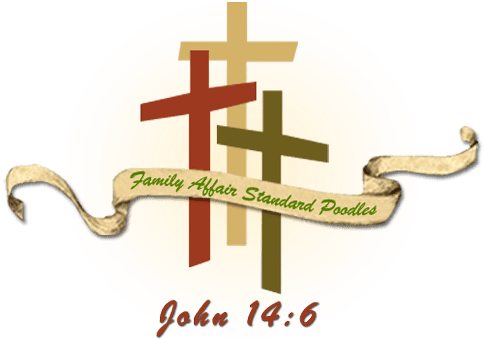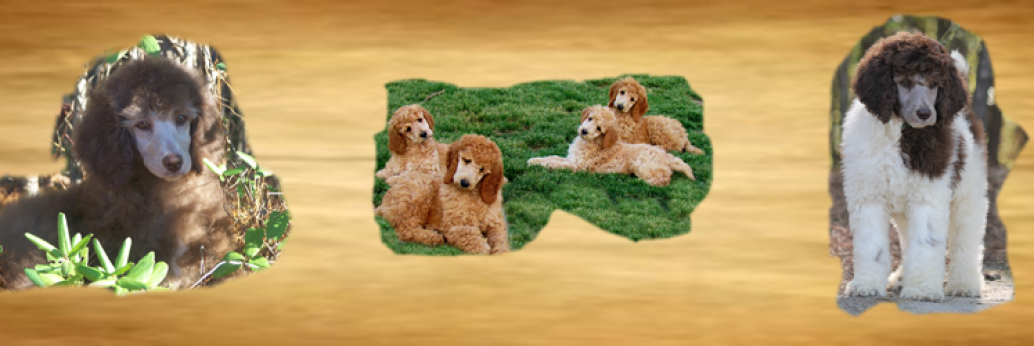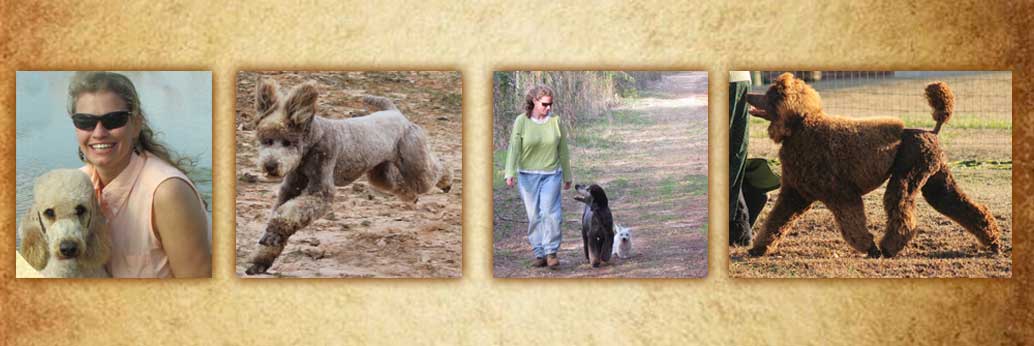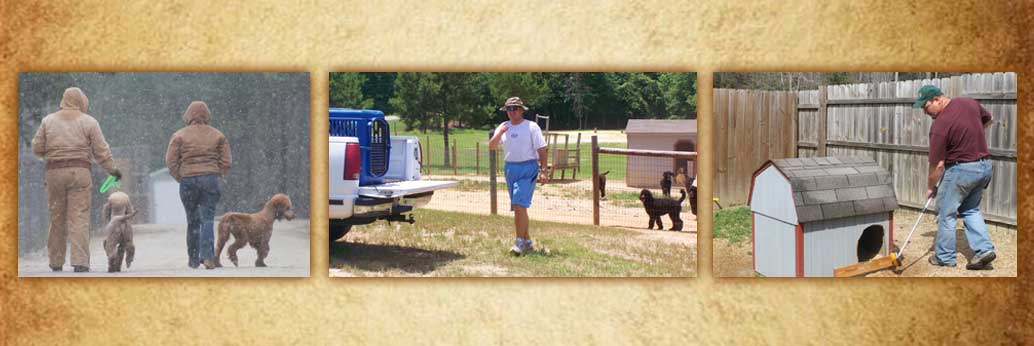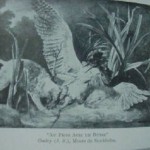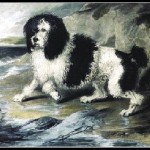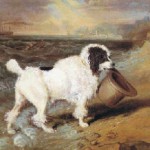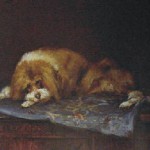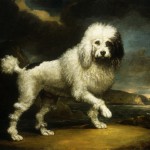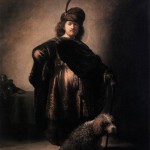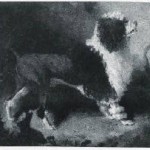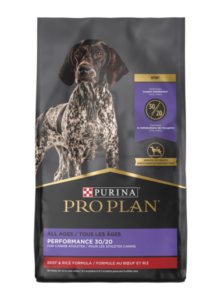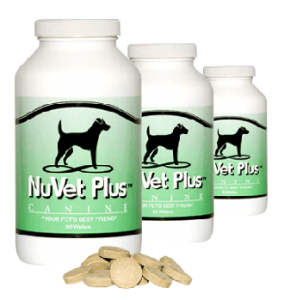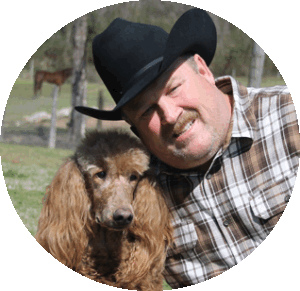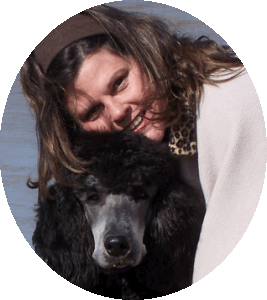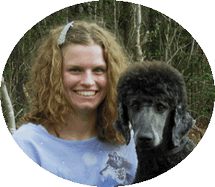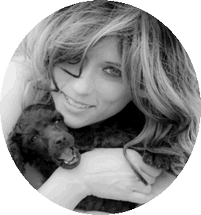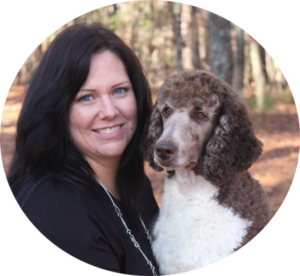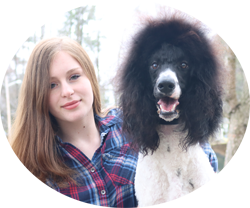From The Illustrated Kennel News (Dec. 1912) an article by Nellie Dagois titled The Poodle and His History:
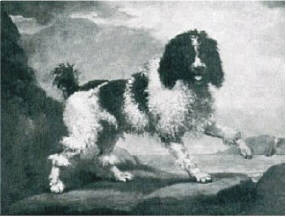 “This race of dogs has the head rather large and round, the cerebral space more developed than in other canine, the frontal sinus expanded, the ears long, the legs rather short, and the body compact; the hair over every part of the animal long, curly, black, or white and black, sometimes rufous (red).
“This race of dogs has the head rather large and round, the cerebral space more developed than in other canine, the frontal sinus expanded, the ears long, the legs rather short, and the body compact; the hair over every part of the animal long, curly, black, or white and black, sometimes rufous (red).
Our Original (‘Perfect’) Water Dog: the Poodle”: lightly-edited excerpts from: Gervase Markham (1568-1637), Hungers Prevention: or The Whole Arte of Fowling by Water and Land… (London, 1621), pp. 29; 32; 67-88.
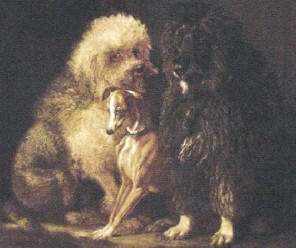 “The water dog [Poodle] is a creature of such general use, and so frequent in use amongst us here in England, that it is needless to make any large description of him: the rather since not any among us is so simple that he cannot say when he sees him: ‘This is a water dog,’ or ‘a dog bred for the Water’…. I will here describe…the best proportion of a perfect water dog.
“The water dog [Poodle] is a creature of such general use, and so frequent in use amongst us here in England, that it is needless to make any large description of him: the rather since not any among us is so simple that he cannot say when he sees him: ‘This is a water dog,’ or ‘a dog bred for the Water’…. I will here describe…the best proportion of a perfect water dog.
First, for the colour of the best water dog, albeit some…will ascribe more excellency to one colour than to another, as the black to be the best and hardest, and the Liver-hued swiftest in swimming, and the pied or spotted dog, quickest of scent; yet in truth it is nothing so, for all colours are alike, and so a dog of any of the former colours may be excellent good dogs…according to their first ordering and training; for instruction is the liquor wherewith they are seasoned, and if they be well-handled at the first, they will ever smell of that discretion, and if they be ill-handled they will ever stink of that folly: For nature is a true mistress and bestowes her gifts freely, and it is only nurture which abuseth them. To proceed then, your dog may be of any colour and yet excellent, and his hair in general would be long and curled, not loose and shaggy; for the first shows hardness and ability to endure the water, the other much tenderness and weakness, making his sport grievous. His head would be round and curled, his ears broad and hanging, his eye full, lively and quick, his nose very short, his lip hound-like, side [ample] and rough-bearded, his chops with a full set of strong teeth, and the general features of his whole countenance being united together would be as lion-like as might be, for that shows fierceness and goodness. His neck would be thick and short, his breast like the breast of a ship, sharp and compact; his shoulders broad, his fore legs straight, his chine [spine] square, his buttocks round, his rigs compassed [curved], his belly gaunt, his thighs brawny, his cambrels [hocks] crooked, his pasterns strong and dew clawed, and all his four feet spacious [webbed] to the claw, like a water duck, for they being his oars to row him in the water, having that shape, will carry his body away the faster. And thus you have the true description of a perfect water dog, as you may see following.

